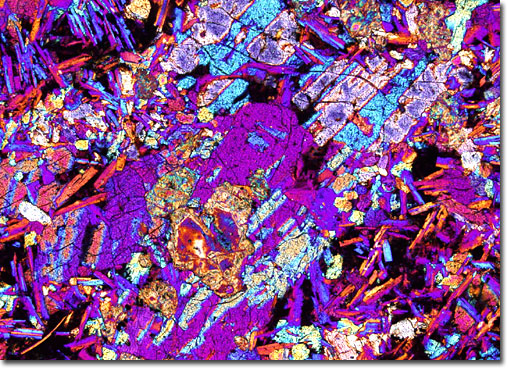|
Interestingly, many of the moon rocks brought back to Earth by the Apollo space missions are basalts. These samples from the moon are, however, slightly different than terrestrial basalts, lacking organic compounds and water, as well as containing higher levels of certain substances, such as iron and magnesium. Nevertheless, the lunar rocks offer important evidence of the moonís history. The development of basalts, for example, is an indication that the moon formerly experienced a series of events that included massive amounts of heating and melting, despite the low level of lunar activity demonstrated today.
|
